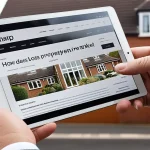Actionable Sustainability Improvements for UK Homes
Making a sustainable home in the UK is achievable with deliberate, step-by-step changes. Prioritising eco-friendly home improvements can reduce environmental impact while enhancing comfort and lowering bills.
Start by focusing on home energy efficiency. This includes upgrading insulation and installing energy-efficient heating systems, which are vital in the UK’s variable climate. Prioritise improvements that offer the greatest benefit, such as efficient lighting, draught-proofing, and smart thermostats, to maximise both savings and sustainability.
Also read : What are the most effective ways to soundproof your UK apartment?
UK-specific factors must be considered, such as local climate and available government incentives. For example, eco-friendly glazing options tailored to UK weather can reduce heat loss. Additionally, incorporating renewable technologies like solar panels or domestic wind turbines aligns well with UK eco-friendly living initiatives.
Simple changes such as switching to energy-efficient appliances and adopting behavioural shifts around energy use contribute significantly. Combining these with water-saving fixtures and waste reduction practices supports a comprehensive approach to sustainable home living.
Also read : How can you create a functional home office in small UK spaces?
By taking informed steps that reflect the UK’s unique environment and resources, homeowners can make substantial progress toward creating an eco-friendly home that balances efficiency, comfort, and environmental responsibility.
Actionable Sustainability Improvements for UK Homes
Making your home more sustainable starts with practical, eco-friendly home improvements tailored to the UK climate and lifestyle. Begin by assessing your home’s current energy efficiency to prioritise upgrades with the greatest impact.
The first step often involves improving insulation. Proper insulation reduces heating needs, crucial for colder UK winters, and complements double glazing UK window upgrades by minimising heat loss through glass surfaces. This change enhances home energy efficiency, resulting in lower energy bills and reduced carbon footprints.
Next, consider installing energy-efficient appliances and smart thermostats. Both contribute significantly to sustainable home management by optimising energy use throughout the day. UK eco-friendly living benefits greatly from smart thermostats adjusting heating according to occupancy patterns, cutting unnecessary consumption.
Beyond technology, small behavioural adjustments and organic improvements—such as sealing drafty areas or upgrading to LED lighting—fortify sustainability. Always explore local council incentives and government grants that support eco-friendly home improvements, making upgrades affordable.
By combining low-impact, step-by-step changes focused on UK-specific needs, homeowners can build a truly sustainable home that aligns with both environmental goals and everyday comfort.
Energy Efficiency Strategies for UK Homes
Improving insulation is crucial to minimizing heat loss in UK homes. Proper wall, loft, and floor insulation help maintain warmth, reducing reliance on heating systems. Combining insulation with double glazing UK windows further curtails drafts and thermal leakage, essential for the UK’s cooler climate.
Investing in energy-efficient appliances significantly lowers electricity consumption. Look for appliances rated A+++ to ensure optimal performance with minimal energy use. Incorporating smart thermostats enables precise temperature control, adapting heating schedules to daily routines, which enhances both comfort and efficiency.
Homeowners can benefit from government grants and schemes supporting home energy efficiency upgrades. These initiatives often provide financial aid for insulation, glazing, and energy-efficient installations, making eco-friendly home improvements more accessible. Confirm eligibility and available funds through local councils or official channels to maximise support.
In the UK, combining upgraded insulation, modern glazing technologies, and smart heating controls delivers a compelling strategy to reduce energy waste. This approach ensures efficient heat retention, cuts bills, and aligns seamlessly with broader UK eco-friendly living goals. Prioritising these improvements offers immediate comfort benefits and long-term environmental rewards.
Actionable Sustainability Improvements for UK Homes
Developing a truly sustainable home requires a coherent approach with step-by-step changes prioritising impact. To optimise home energy efficiency in UK settings, focus first on areas where losses occur most, such as walls, roofs, and floors. Enhancing insulation quality in these areas can reduce heating demand significantly during cold seasons.
Eco-friendly home improvements should also include upgrading to double glazing UK windows, which prevent heat escape while adapting to the local climate. This benefits both comfort and energy bills. When considering investments, balance upfront costs with long-term savings and environmental gains.
The UK’s unique climate and housing stock also imply specific priorities. For example, draught-proofing older properties complements insulation by addressing air leaks thoroughly. Smart heating controls and energy-efficient appliances further optimise energy use without sacrificing convenience, adapting well to typical UK occupancy patterns.
Finally, leverage local schemes and UK government incentives designed to support these eco-friendly upgrades. Such resources make adopting sustainable solutions more attainable while ensuring improvements align with national environmental goals.
These targeted actions form the foundation of effective sustainable UK homes, blending practical steps with tailored, location-specific strategies to maximise positive impact.
Adopting Renewable Energy Solutions
Harnessing UK solar panels is a highly effective way to power a sustainable home. Solar panels convert sunlight into electricity, significantly reducing reliance on fossil fuels. They operate efficiently year-round in the UK climate, providing clean energy and helping lower energy bills. Homeowners often see strong returns on investment through energy savings and increased property value.
Complementing solar power, domestic wind turbines offer additional renewable energy options, especially in wind-prone areas of the UK. Small-scale turbines can supplement or offset electricity consumption, enhancing overall energy independence. However, assessing local wind conditions and planning permission is essential before installation.
Switching to green energy tariffs supports wider UK eco-friendly living by sourcing electricity from renewables without upfront installation. These tariffs encourage market demand for clean energy and reduce carbon footprints conveniently.
Finally, homeowners can access the Renewable Heat Incentive, a UK government scheme offering financial incentives to install renewable heat technologies like heat pumps or biomass boilers. This encourages investment in clean heating solutions, aligning perfectly with broader eco-friendly home improvements that increase both sustainability and comfort.
Actionable Sustainability Improvements for UK Homes
Enhancing a sustainable home involves targeted, step-by-step changes centred on home energy efficiency and UK-specific needs. Start by identifying heat loss points unique to UK properties, such as older walls and roofs, then prioritise upgrades like improving loft and cavity wall insulation. These targeted fixes lead to measurable reductions in energy consumption and heating costs.
Next, focus on eco-friendly home improvements that suit the UK’s climate. For example, draught-proofing around doors and windows effectively reduces cold air ingress, complementing insulation upgrades. Selecting smart heating controls, such as programmable thermostats, helps optimise energy use based on typical UK occupancy patterns, preventing wasted warmth and cutting bills.
UK eco-friendly living encourages using government schemes and local incentives to offset upfront costs. Homeowners can explore grants targeted at energy efficiency, making substantial upgrades more affordable. Always evaluate improvements for their long-term environmental impact and cost-benefit balance, ensuring each change contributes meaningfully.
By prioritising these well-planned, location-aware improvements, UK homeowners achieve a durable, comfortable, and genuinely sustainable home that balances ecological responsibility with everyday practicality.
Actionable Sustainability Improvements for UK Homes
Creating a truly sustainable home involves targeted, step-by-step changes designed for UK eco-friendly living. Begin by assessing areas where your home loses energy most—walls, roofs, and floors—and focus on enhancing home energy efficiency through improved insulation and airtightness. Addressing drafts and sealing gaps reduces unnecessary heat loss, especially in older UK properties prone to leaks.
Next, prioritise eco-friendly home improvements that balance upfront costs with long-term savings. Upgrading to efficient heating controls such as smart thermostats lets you tailor warmth to occupancy and weather conditions, avoiding wasted energy. Alongside this, switching to energy-efficient appliances rated highly for performance ensures electricity use is minimised without sacrificing comfort.
It’s essential to consider UK-specific factors, such as local climate variability and the age of building stock, which influence which solutions will be most effective. Leveraging government schemes and local grants designed to promote home energy efficiency can make these improvements more affordable and accelerate their positive impact.
By focusing improvements on areas with the highest energy loss and utilising modern technologies, homeowners can maximise sustainability gains efficiently and support broader UK environmental goals.
Actionable Sustainability Improvements for UK Homes
Achieving a sustainable home in the UK demands targeted, step-by-step approaches prioritising home energy efficiency to maximise impact. Begin by identifying critical heat loss zones typical in UK housing, such as uninsulated lofts and cavity walls. Upgrading these areas with high-quality insulation significantly cuts energy consumption, a foundational step in UK eco-friendly living.
Next, focus on eco-friendly home improvements like draught-proofing, particularly around older window frames and doors, which seals unintended air leaks. This complements insulation efforts, further enhancing thermal retention during colder months common in the UK climate. Installing modern, energy-efficient lighting also reduces electricity use without compromising convenience.
Smart heating controls are pivotal. Programmable or smart thermostats optimise heating schedules to fit typical UK occupancy patterns, avoiding wasteful heating when homes are unoccupied. Such devices enhance home energy efficiency noticeably while improving comfort.
Finally, explore local and national incentives supporting eco-friendly improvements. Many UK home energy efficiency schemes offer grants or rebates that offset upfront costs. Utilising these resources aligns economic and environmental goals, making sustainable upgrades more accessible and impactful.
By layering these UK-specific, actionable improvements—insulation, draught-proofing, smart controls, and leveraging support—homeowners build a genuinely sustainable home suited to UK eco-friendly living.
Actionable Sustainability Improvements for UK Homes
Transforming your residence into a sustainable home involves strategic, step-by-step changes that focus on maximising home energy efficiency and align with UK eco-friendly living standards. Start by identifying the most significant areas of energy loss specific to your property—walls, roofs, floors, and older window units. Enhancing insulation quality paired with draft-proofing seals heat retention gaps, essential in the UK’s cooler, variable climate.
Next, prioritise eco-friendly home improvements that offer lasting benefits without excessive upfront costs. This includes integrating smart thermostats to optimise heating based on occupancy and weather patterns, an approach that significantly cuts unnecessary energy use. Additionally, choose highly efficient appliances that meet the UK’s energy standards, ensuring reduced electricity consumption while maintaining comfort.
Recognise that older UK building stock often requires bespoke solutions tailored to typical architectural features and material age. Use available government incentives and local council grants to reduce financial barriers, accelerating your transition to eco-conscious living.
By balancing cost, climate considerations, and technology, these targeted improvements maximise your home’s energy efficiency, delivering comfort and contributing meaningfully to sustainable UK environmental goals.


